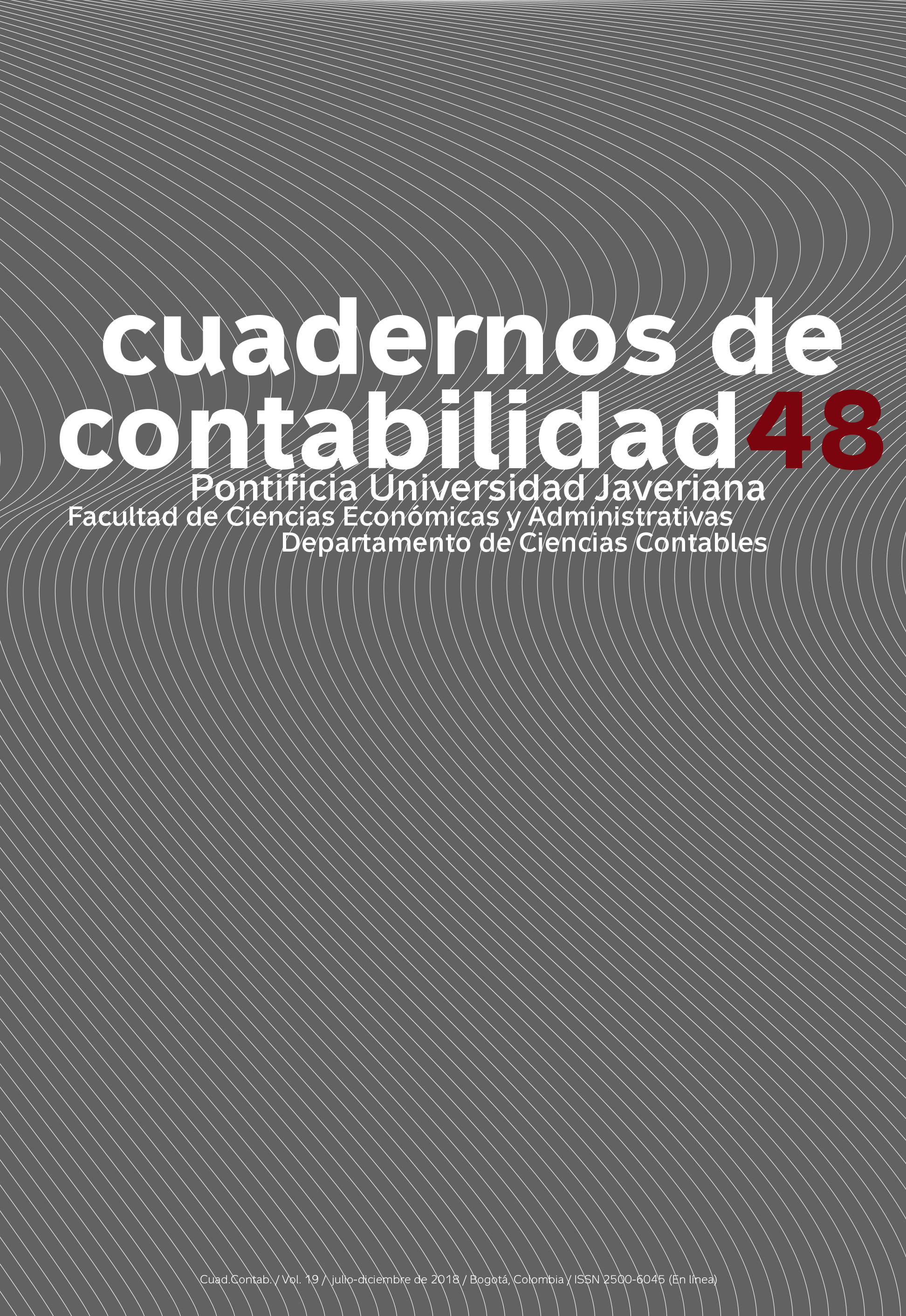Resumen
El presente artículo presenta un modelo de simulación organizacional aplicado a la Empresa de Telecomunicaciones de Bogotá (ETB), para estimar el impacto financiero de las políticas y estrategias de negocio antes de implementarlas, reduciendo así el riesgo inherente a la toma de decisiones inadecuadas o inoportunas. El modelo dinámico representa la cadena de valor de la ETB, y a través del análisis de causalidad de las variables se facilita el entendimiento del modelo de negocio y la evaluación financiera de las alternativas que se planteen como políticas de intervención en el sistema. Esta investigación constituye un punto de partida para futuras pesquisas relacionadas con modelación de negocios o de simulación y evaluación de políticas.
Aracil, J., Ponce, E., & Pizarro, L. (1997). Behavior Patterns of Logistic Models with a Delay. Journal Mathematics and Computers in Simulation, 44(2), 123-141. DOI: 10.1016/S0378-4754(97)00060-8
Berger, P., & Nasr, N. (1998). Customer lifetime value: Marketing models and applications. Journal of Interactive Marketing, 12(1), 17-30. DOI: https://doi.org/10.1002/(SICI)1520-6653(199824)12:1<17::AID-DIR3>3.0.CO;2-K
Certo, S. (2001). Administración moderna: diversidad, calidad, ética y el entorno global. México D.F.: Pearson Educación.
Chiavenato, I. (2006). Introducción a la teoría general de la administración. México D.F.: McGraw-Hill.
Fayol, H. (1987). Administración industrial y general. Buenos Aires: El Ateneo.
Forrester, J. (1961). Industrial Dynamics. Cambridge, U.S.A.: MIT Press.
Joly, F. (1988). La cartografía. Barcelona: Oikos-Tau.
Kaplan, R., & Norton, D. (2009). Cuadro de Mando Integral. The Balanced Scorecard. Barcelona: Ediciones Gestión 2000.
Kast, F., & Rosenzweig, J. (1998). Administración en las organizaciones. Enfoque de sistemas y de contingencias. México D.F.: McGraw-Hill.
Koontz, H., & Weihrich, H. (2005). Elementos de Administración. Un enfoque internacional y de innovación. México D.F.: McGraw-Hill.
Krajewski, L., & Ritzman, L. (2000). Administración de Operaciones. Estrategia y análisis. México D.F.: Pearson Educación.
Martínez, H. (2002). Toma de decisiones. Consultado en línea el 08 de febrero de 2017 en http://www.virtual.unal.edu.co/cursos/economicas/92402/capitulos/capitulo10/cap107.html
MyP Consultores. (s.f.). Proceso de Generación del Cuadro de Mando Integral. Recuperado de: http://www.mypconsultores.es/index-19.html
Naylor, T., Balintfy, J., Burdick, D., & Chu, K. (1971). Técnicas de simulación en computadoras. Madrid: Limusa-Wiley.
Niven, P. (2010). Balanced Scorecard Step by Step. Hoboken, N. J.: John Wiley& Sons.
Shannon, R. (1975). System Simulation: The Art & Science. Englewood Cliffs, New Jersey: Prentice-Hall.
Shubik, M. (1975). Games for Society, Business and War: Towards a Theory of Gaming. New York: Elsevier.
Steed, M. (1992). Stella, a simulation construction kit: cognitive process and educational implications. Journal of Computers in Mathematics and Science Teaching, 11(1), 39-52.
Steffe, L., & Von Glasersfeld, E. (1985). Helping children to conceive of number. Recherches en didactique des mathématiques, 6, 269-303. DOI: nd.
Sterman, J. (1994). Learning in and about complex systems. System Dynamics Review, 10(2), 291-330. DOI: https://doi.org/10.1002/sdr.4260100214
El aval sobre la intervención de la obra (revisión, corrección de estilo, traducción, diagramación) y su posterior divulgación se otorga mediante una licencia de uso y no a través de una cesión de derechos, lo que representa que la revista y la Pontificia Universidad Javeriana se eximen de cualquier responsabilidad que se pueda derivar de una mala práctica ética por parte de los autores. En consecuencia de la protección brindada por la licencia de uso, la revista no se encuentra en la obligación de publicar retractaciones o modificar la información ya publicada, a no ser que la errata surja del proceso de gestión editorial. La publicación de contenidos en esta revista no representa regalías para los contribuyentes.



